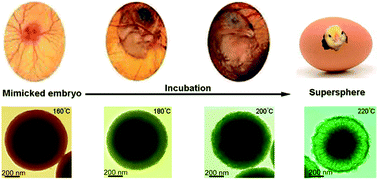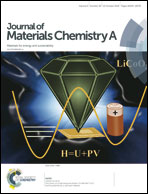3D core–shell MoS2 superspheres composed of oriented nanosheets with quasi molecular superlattices: mimicked embryo formation and Li-storage properties†
Abstract
Monodispersed 3D core–shell superspheres consisting of oriented MoS2 nanosheets have been successfully synthesized on the large scale with a one-pot approach combining soft- and self-templated methods. Specifically, MoOx (x = 2–3) nanoclusters and MoS2 layers first self-assemble together with (CTAB)2Sy (y = 1 or 2) to form solid hybrids, MoOx–MoS2@(CTAB)2Sy spheres at 160 °C, and most of the MoOx nanoclusters then convert to MoO2 and 2H-MoS2 at 180 and 200 °C, respectively. 3D core–shell superspheres can be finally constructed with 2H/1T-MoS2 nanosheets with abundant O-dopants and defects at 220 °C. The expanded d-spacings of the (002) crystal plane reveal the formation of quasi molecular superlattices for partially intercalating (CTAB)2S molecules into 2D MoS2 nanosheets. The dynamic composition and nano/microstructural evolution of the materials in a one-pot reaction demonstrates a mimicked embryo formation based on in situ anion-exchange. The 3D core–shell superspheres can be applied to assemble anodes for lithium ion batteries (LIBs) with excellent performance, after being coated with reduced graphene oxide (RGO).



 Please wait while we load your content...
Please wait while we load your content...